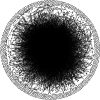Examining Knowledge Diffusion in the Circular Economy Domain: a Main Path Analysis
- PMID: 35818534
- PMCID: PMC9261236
- DOI: 10.1007/s43615-022-00189-3
Examining Knowledge Diffusion in the Circular Economy Domain: a Main Path Analysis
Abstract
The circular economy (CE) field has recently attracted significant interest from academics and practitioners. CE represents a departure from the linear economy, which is characterised by unsustainable resource production and consumption. The growing number of publications necessitates a comprehensive analysis of this field. This is the first systematic examination of the knowledge base and knowledge diffusion pathways in the CE domain. We analyse a Web of Science dataset containing 5431 articles published between 1970 and 2020. To create a comprehensive review of the CE domain, we conducted a keyword co-occurrence network analysis. We examined four distinct types of main paths using the main path analysis (MPA) technique: forward, backward, global, and key-route. According to the analyses, CE research focuses on six primary research themes: CE and sustainability, bioeconomy, CE practices, lifecycle assessment and industrial symbiosis, construction activities, and waste management. In addition, the MPA demonstrates that the CE literature has recently focused on Industry 4.0 technologies and their contribution to CE. This is the first attempt to depict the genealogy of CE research so that scholars can comprehend the domain's evolutionary structure, identify hot topics, and capture the history, development status, and potential future directions of CE research.
Keywords: Circular economy; Eco-innovation; Industry 4.0.; Knowledge diffusion; Main path analysis; Sustainability.
© The Author(s) 2022.
Conflict of interest statement
Competing InterestsThe authors declare no competing interests.
Figures
Similar articles
-
A bibliometric analysis of the literature on circular economy and sustainability in maritime studies.Environ Dev Sustain. 2023 Feb 4:1-28. doi: 10.1007/s10668-023-02942-6. Online ahead of print. Environ Dev Sustain. 2023. PMID: 36778759 Free PMC article. Review.
-
Circular Economy Research in the COVID-19 Era: a Review and the Road Ahead.Circ Econ Sustain. 2023 Mar 27:1-31. doi: 10.1007/s43615-023-00265-2. Online ahead of print. Circ Econ Sustain. 2023. PMID: 37360377 Free PMC article. Review.
-
A critical review of the circular economy for lithium-ion batteries and photovoltaic modules - status, challenges, and opportunities.J Air Waste Manag Assoc. 2022 Jun;72(6):478-539. doi: 10.1080/10962247.2022.2068878. J Air Waste Manag Assoc. 2022. PMID: 35687330 Review.
-
Knowledge Diffusion of the Internet of Things (IoT): A Main Path Analysis.Wirel Pers Commun. 2022;126(2):1177-1207. doi: 10.1007/s11277-022-09787-8. Epub 2022 Jun 6. Wirel Pers Commun. 2022. PMID: 35694533 Free PMC article.
-
Unpacking financial aspects of circular economy: A systematic literature review.J Environ Manage. 2025 Jun;384:125507. doi: 10.1016/j.jenvman.2025.125507. Epub 2025 May 2. J Environ Manage. 2025. PMID: 40318614
References
-
- Aadland D, Caplan AJ. Curbside recycling: waste resource or waste of resources? J Policy Anal Manage. 2006;25(4):855–874. doi: 10.1002/pam.20211. - DOI
-
- de Abreu MCS, Ceglia D. On the implementation of a circular economy: the role of institutional capacity-building through industrial symbiosis. Resour Conserv Recycl. 2018;138:99–109. doi: 10.1016/j.resconrec.2018.07.001. - DOI
-
- Agyemang M, Kusi-Sarpong S, Khan SA, Mani V, Rehman ST, Kusi-Sarpong H. Drivers and barriers to circular economy implementation: an explorative study in Pakistan’s automobile industry. Manag Decis, Emerald Publ Limit. 2019;57(4):971–994. doi: 10.1108/MD-11-2018-1178. - DOI
-
- Alamerew YA, Brissaud D. Modelling reverse supply chain through system dynamics for realizing the transition towards the circular economy: a case study on electric vehicle batteries. J Clean Prod. 2020;254:120025. doi: 10.1016/j.jclepro.2020.120025. - DOI
-
- Alamerew YA, Kambanou ML, Sakao T, Brissaud D. A multi-criteria evaluation method of product-level circularity strategies. Sustain, Multidisc Dig Publ Instit. 2020;12(12):5129.
Publication types
LinkOut - more resources
Full Text Sources








